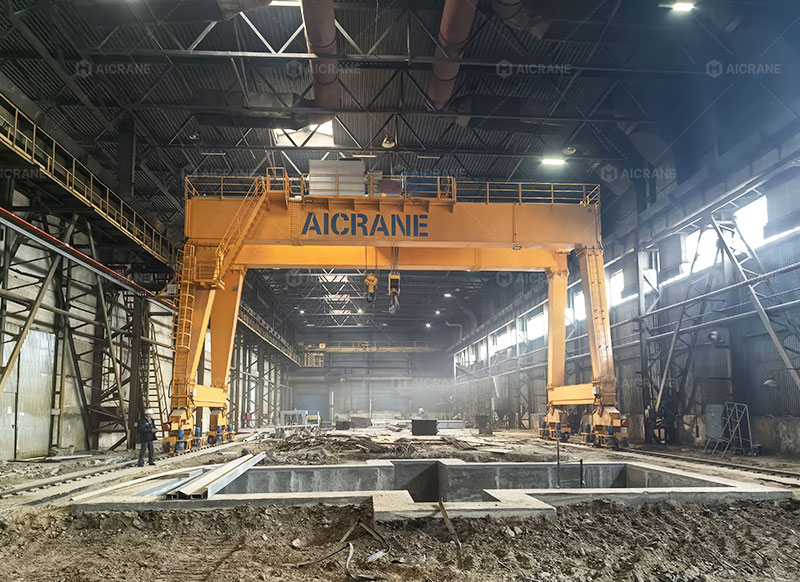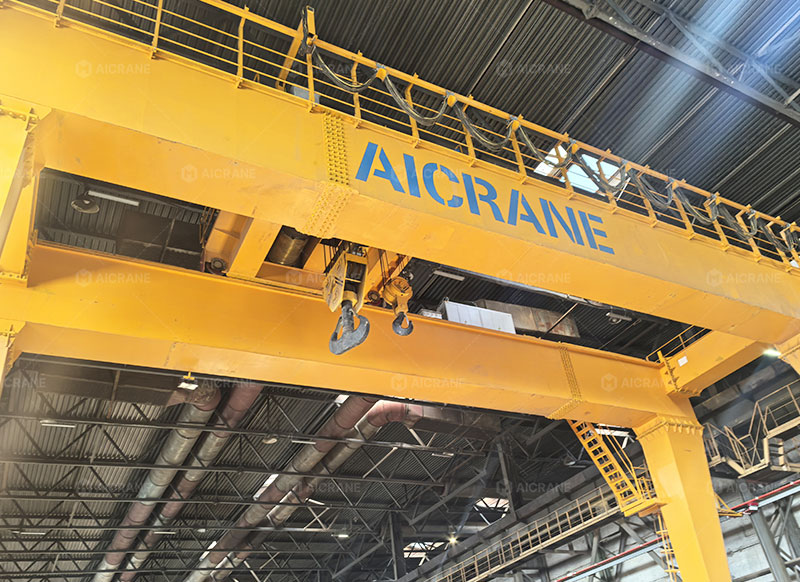Gantry cranes are vital for heavy lifting operations in industries such as shipbuilding, steel production, construction, and logistics. Among these, the 100-ton gantry crane stands out as a workhorse for handling extremely heavy loads with efficiency and safety. If you are considering purchasing a 100-ton gantry crane, one of the most pressing questions is the price. Understanding the cost components and how to budget effectively is crucial to making a sound investment. This article explores key factors influencing the 100 ton gantry crane price and provides a framework for budgeting.

Understanding the Basics of a 100-Ton Gantry Crane
Before diving into pricing, it’s important to understand what a 100-ton gantry crane entails. A gantry crane is a crane built atop a gantry, a structure that spans a workspace. Unlike overhead bridge cranes installed in factories, gantry cranes can operate outdoors and do not require extensive structural support from the building.
Key specifications of a 100-ton gantry crane include:
-
Load capacity: 100 tons, suitable for heavy industrial operations.
-
Span: The distance between the two supporting legs, typically ranging from 20 to 40 meters or more.
-
Lifting height: Can vary depending on application, often 10 to 30 meters.
-
Work duty classification: Determines the crane’s operational frequency and longevity, e.g., A5 or A6.
-
Control options: Ground control, pendant control, or remote control.
These specifications are fundamental to determining the gantry crane price, as each parameter affects material costs, engineering complexity, and manufacturing requirements.
Key Factors Influencing 100-Ton Gantry Crane Price
The price of a 100-ton gantry crane can vary widely depending on multiple factors. Understanding these drivers will help you budget effectively.
1. Crane Type: Single Girder vs. Double Girder
-
Single girder cranes: Usually more affordable and suitable for lighter applications.
-
Double girder cranes: Heavier, more stable, and ideal for lifting 100-ton loads. Double girder designs dominate in the 100-ton range, but their higher material and manufacturing costs make them more expensive than single girder models.
2. Span and Lifting Height
The span (width between legs) and lifting height directly affect steel consumption. Wider spans and higher lifts require stronger beams, more robust support structures, and higher-quality hoists. A gantry crane with a 30-meter span will cost significantly more than one with a 20-meter span due to increased steel and fabrication complexity.
3. Work Duty and Frequency of Use
Work duty, defined by standards such as ISO or FEM, dictates how often the crane can operate without compromising safety. A crane with a heavy-duty classification (A6 or A7) will be more expensive than a moderate-duty crane (A5) because it uses higher-strength materials and more durable mechanical components to handle frequent lifting of 100-ton loads.
4. Automation and Control Systems
Modern gantry cranes can include sophisticated control systems:
-
Remote control and radio operation
-
Anti-sway and load monitoring systems
-
Variable frequency drives (VFD) for smooth motion
While these features improve safety and efficiency, they also increase the overall cost. For companies that prioritize precision and reduced downtime, investing in advanced control systems is often justified.
5. Material Quality and Fabrication Standards
The type and quality of steel used, welding standards, and structural reinforcement influence price. Gantry cranes built to European or North American standards tend to cost more due to stricter quality requirements, but they also offer higher reliability and longer service life.
6. Hoist Type
-
Electric wire rope hoists: Common for heavy loads like 100 tons, offering smooth lifting and durability.
-
Hydraulic hoists: Used for specialized applications; usually more expensive and complex.
The choice of hoist significantly impacts both initial investment and maintenance costs.

7. Mobility Options
Gantry cranes can be stationary (fixed) or mobile (on rails or wheels). Mobile gantry cranes provide flexibility in outdoor or large industrial sites but come with additional costs for wheels, rails, and mobility mechanisms.
8. Customizations and Accessories
Optional features such as cantilever extensions, dual hoists, overload protection, and painting/coating for outdoor corrosion resistance can add 10–30% to the base cost.
Typical Price Range for a 100-Ton Gantry Crane
Given the factors above, a 100-ton gantry crane’s price can vary significantly depending on specifications and location. As a rough guide:
| Crane Type | Span | Approx. Price Range (USD) |
|---|---|---|
| Double girder, moderate duty | 20–25 m | $250,000 – $350,000 |
| Double girder, heavy duty | 25–35 m | $350,000 – $500,000 |
| High-end, customized features | 30–40 m | $500,000 – $700,000+ |
Keep in mind these are approximate prices, and final costs depend on local labor, shipping, taxes, and installation fees.
Budgeting Tips for Purchasing a 100-Ton Gantry Crane
Proper budgeting requires considering both upfront and long-term costs. Here are practical steps:
1. Define Your Operational Requirements
Understand your load handling needs: frequency, lifting height, span, and environmental conditions. Avoid over-specifying the crane, which can unnecessarily inflate costs.
2. Request Multiple Quotes
Engage several reputable gantry crane manufacturers and suppliers. Compare not just base price but also warranty, delivery, installation, and after-sales support.
3. Include Installation and Commissioning Costs
Installation of a 100-ton gantry crane requires professional engineers, crane assembly, testing, and commissioning. Installation can add 10–15% to the total cost.
4. Factor in Transportation
Large gantry crane components require specialized shipping and handling. For international orders, customs duties and insurance should also be included in the budget.
5. Plan for Maintenance and Operational Costs
Regular maintenance is critical for safety and performance. Budget for lubricants, inspections, hoist repairs, and electrical component replacement over the crane’s lifecycle.
6. Consider Financing Options
Many suppliers offer leasing or financing options to spread the investment over several years. This can make acquiring a 100-ton gantry crane feasible for businesses with limited upfront capital.
Maximizing Value Without Overspending
-
Prioritize essential features: Only invest in advanced systems if they directly improve safety, efficiency, or compliance.
-
Evaluate local vs. imported options: Sometimes local manufacturers provide cost-effective solutions without compromising quality.
-
Plan for long-term expansion: Choose a crane with slightly higher work duty or modular features to accommodate future growth.
Conclusion
Budgeting for a 100-ton gantry crane requires careful consideration of specifications, materials, control systems, mobility, and installation. Prices can range from $250,000 to $700,000 or more depending on these factors. By understanding the key cost drivers and planning for both upfront and operational expenses, companies can make informed decisions, avoid overspending, and select a crane that meets their heavy lifting needs safely and efficiently.
Investing in a 100-ton gantry crane is significant, but with proper budgeting and supplier selection, it becomes a long-term asset that enhances productivity, safety, and operational efficiency.